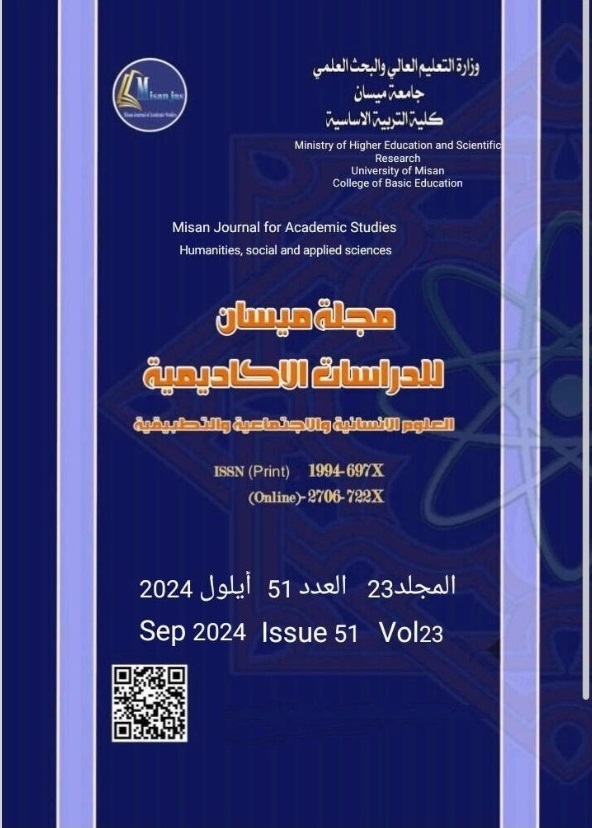The economic and social reasons leading to the phenomenon of child labor in Al-Fuhud district in the year 2023
Abstract
The research aimed to study some economic variables, which it sees as the main reasons that pushed children towards the labor market, by answering the research questions related to the reasons for child labor that pushed children towards the labor market and the circumstances of their families. Therefore, child labor is a phenomenon closely linked to the economic aspect, because the economic level represents one of the basic variables that push the individual towards work in any society, as economic reasons top the list among the reasons leading to children's involvement in work. The low standard of living of the family plays a role in children's orientation towards the labor market instead of continuing in school or combining the two, and this is what studies and research that paid attention to child labor indicated, as families with low and even medium incomes are sometimes forced to throw some of their children into the labor market in order to obtain part of their material requirements. The sample size was based on the economic activity represented by the activity (commercial, industrial and agricultural) in the district. The sample size studied was (700) boys and girls distributed between both sexes, as the number of males was (434) children and the number of females was (66) girls in the study area from children aged between (6-14) years.
Downloads
Copyright (c) 2024 (Humanities, social and applied sciences) Misan Journal of Academic Studies

This work is licensed under a Creative Commons Attribution-NonCommercial-NoDerivatives 4.0 International License.
The copyright is also the copyright of the magazine only.
All articles published in our magazine are subject to license terms
Creative Commons Attribution(CC BY-NC-ND 4.0) This license permits the content to be reproduced, redistributed and reused in whole or in part for any purpose free of charge, without any permission from the author(s), researcher or student.
Works submitted to Maysan Journal of Academic Studies for publication in the journal (CC BY-NC-ND 4.0) license terms. Where available content can be shared, distributed and replicated provided there is no commercial profit and appropriate credit must be given to the original source through sources or citations. It is mandatory to review any material used from other sources including shapes, tables, and images for re-use under the terms of the Creative Commons License (CC BY-NC-ND 4.0).Provided that there is no modification to the original content



